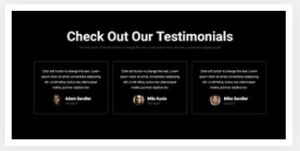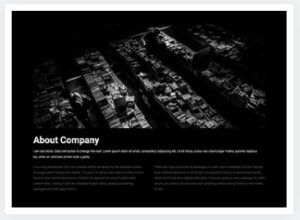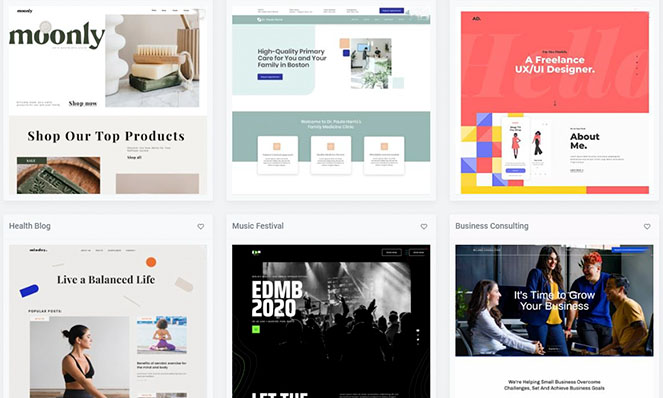Wondering which business website pages you need? With this article, we’ll help you determine which pages you’ll need for your small business website. Think about this: have you ever visited a website that seemed to have been designed as an afterthought? That’s certainly not a great first impression! For the small business owner, getting a new website can feel really overwhelming. You’re not sure what pictures you’ll use, what the color scheme should be, or what the text should say. These are all important issues to get right, but even before these, you need to make a plan for what pages or sections your website should have, to best help potential clients. Whether you’re planning for your first website, or doing an update and refresh to an existing site, these 5 must-have small business website pages will help you establish trust and generate more leads with potential customers.
Business Website Pages, or Home Page Sections?
First, you’ll want to think strategically for your business website pages. Where are you at in your web development cycle? If you’re building your first website, and it’s only a single page, you’ll want to plan for future growth, while still having everything you’ll need on your single home page. Our web design philosophy is that you should have a small section on your home page that represents, at least by category, every page on your site. Not only does this help with visitor navigation, but if you need to start your website small because of budget, you’ll still have what you need, and can build out pages as budget becomes available. So, the items below can either represent sections of your single-page site, and/or pages branching off from your home page, whichever applies to your situation.
The Home Page And Hero Section
 Your home page is the “directory” of your website. It tells website visitors everything they need to know about your company, who you service, what services you provide, and why they should choose you. The most important part of your home page is the hero section.
Your home page is the “directory” of your website. It tells website visitors everything they need to know about your company, who you service, what services you provide, and why they should choose you. The most important part of your home page is the hero section.
Your hero section is the first thing people will see on your page, right at the top, without scrolling down (under your navigation header). This is where you get to make that great first impression. You’ll want to be sure to use a powerful image or video in the background here, and that image should immediately make an impression on the visitor, and should also:
- relate to the service or product you offer
- relate to the type of customers you service
- help the potential client understand your business better
Your hero section should also have big, bold text that tells the client who you are, how you can help them, and what action you’d like them to take next. Make sure that the text is easy to read.
Service Category Page / Section
The next thing to consider as you think about your business website pages is your offerings. If you offer a lot of products or services, you should provide categories that help potential clients better understand your business. 
For example, if you are an HVAC company, you might have these service category pages / sections:
- HVAC system repairs
- HVAC system installations
- HVAC maintenance services
If your company breaks down services on a broader scale, you could define your services into the categories of residential, commercial, and industrial. Perhaps you could break down your service offerings into the industries you serve. Just help your clients better understand who you serve, and you’ll be doing well.
Ideally, as you build your roadmap to which business website pages you’ll need, you’ll want a single page for every service you offer. If you’re at an earlier stage in your web development cycle, just make sure you have one page that breaks down your main categories, and you can build individual pages as you grow.
Testimonial Page / Section
Every website needs to have a testimonials section on the home page, as well as a full page, where you can show more testimonials, or different kids of testimonials.
If you only have is a single page site, you’ll want to have what we call “testimonial snippets.” You don’t want to clutter up your home page with big blocks of text, so just choose the best sentence or two from your best testimonials, and place them on the home page.
If you have a full page for testimonials, it’s a great idea to show the full testimonial, along with a photo of the client who wrote it. Another great idea is to use a testimonial video. Testimonial videos are really powerful because they’re much more trustworthy in terms of format.
When trust is at such a premium these days (and no one wants to do business with someone they don’t trust), it’s essential that you attempt to build trust quickly as you build out your business website pages. In fact, it’s a great idea to place a relevant testimonial snippet or two on each of your service pages. These are really powerful, as they relate directly to the services offered on that page.
About Page / Section
 The next page or section that’s important in your business website pages development is “About Us.” While this seems pretty self explanatory, we’ve seen this section end up being much less powerful that it could have, for a couple of reasons.
The next page or section that’s important in your business website pages development is “About Us.” While this seems pretty self explanatory, we’ve seen this section end up being much less powerful that it could have, for a couple of reasons.
First, if your business relies on the personality of the owner, or the staff, and there’s something unique here, be sure to spend time on it. For example, if you’re a home services company, and you pride yourself on your clean-cut and professional-looking technicians, you need to show them here.
Another thing that’s really critical is that, when describing the company, it’s history, services, or characteristics, always keep this one thing in mind: “what’s in it for them?” While it’s great to tell about your company, you want to be sure you’re client focused, meaning: why should the potential client care about this section? How will it affect them or help them? A carefully crafted About Us page or section can help a lot.
Contact Page / Section
 Your contact page or section is absolutely critical as you consider your small business website pages. Not only does this page or section tell clients how they can get ahold of you, it can do a whole lot more.
Your contact page or section is absolutely critical as you consider your small business website pages. Not only does this page or section tell clients how they can get ahold of you, it can do a whole lot more.
Your contact page or section can show or tell clients where your primary service areas are. An embedded map is a great idea for this section, as they can immediately tell if you provide services in their area.
In this section or page, you’ll also want to place sales and service phone numbers, as well as email addresses. This is also a great place to link to the company’s social media channels, where potential clients can see more photos of your work, special offers, client testimonial snippets, and DM you directly.
Continue to Grow Your Business Website Pages!
As you’re building out your business website pages, or you plan to do so, keep these five top pages in mind. They’re a strong foundation from which to grow your web presence. Also keep in mind that the more good and useful content your publish on your website, the higher you’ll rank in the search results, which means many more potential customers.
As you continue to grow your web presence, think about other possibilities for pages and content that can increase your rankings and better inform and help potential customers. For example, if you service multiple cities, consider building out service pages for each city you serve. If there is useful information you can share with potential clients, create a blog where readers can discover more about the services you offer. These are more directly related to search engine optimization (SEO), but they are very much connected with your website.
If you have questions about web design, check out our web design page for small business. There is a good amount of helpful information there. Have questions about SEO? Check out our SEO offerings.
Keep building out those pages, and your business will grow!

